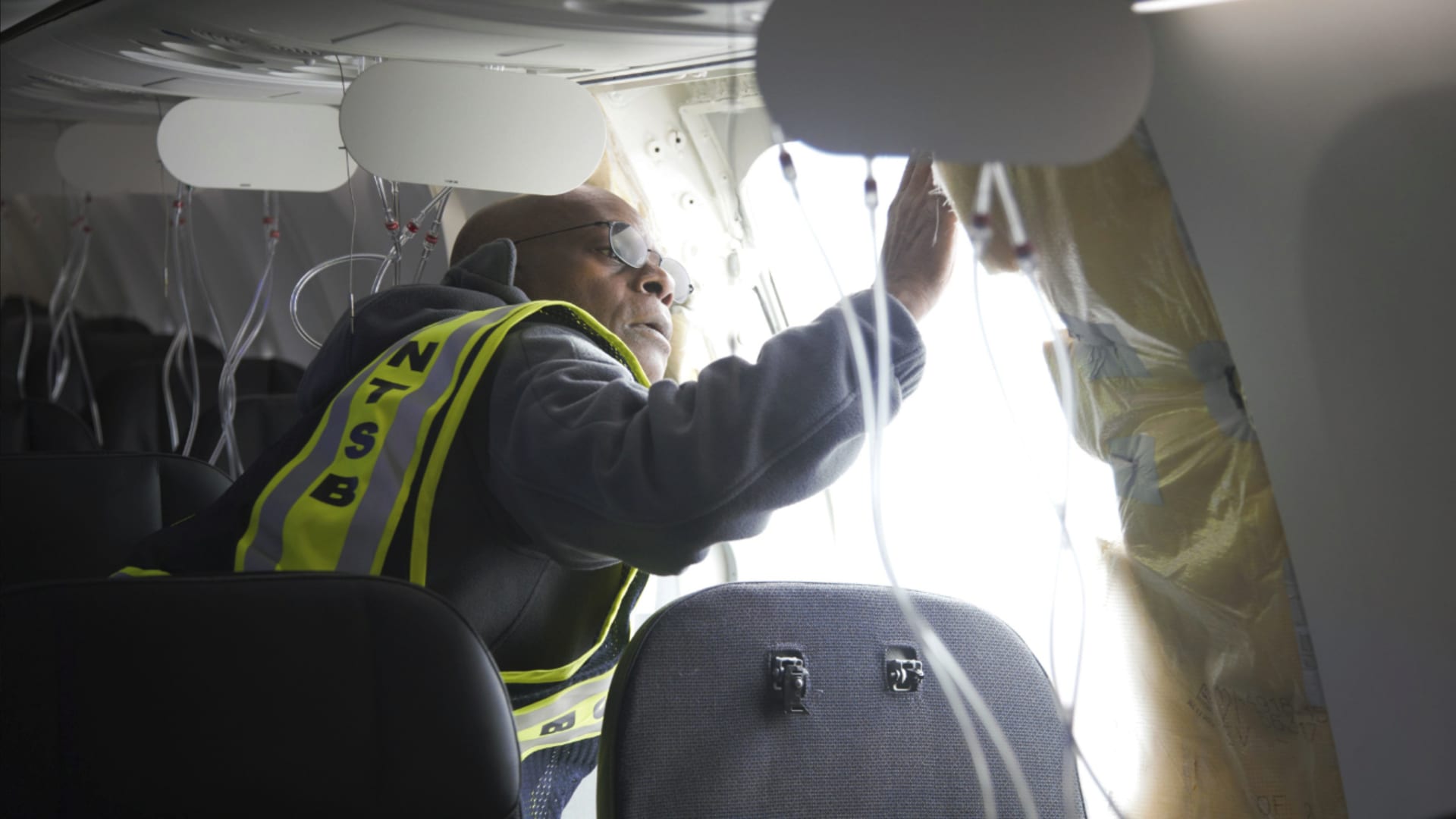In this photo released by the National Transportation Safety Board, investigator-in-charge John Lovell examines the fuselage plug area of Alaska Airlines Flight 1282 in Portland, Oregon, on Jan. 7, 2024.
National Transportation Safety Board via AP
Boeing CEO Dave Calhoun on Tuesday said the company acknowledges “our mistake,” after a door plug on a 737 Max 9 blew out in the middle of an Alaska Airlines flight, creating a gaping hole in the fuselage and prompting a grounding of that aircraft type by federal regulations.
The Federal Aviation Administration grounded the 737 Max 9s less than a day after the incident on Alaska Airlines Flight 1282 so the jets could be inspected. The more common 737 Max 8 was not affected.
“When I got that picture [of the Alaska Airlines 737 Max 9], all I could think about — I didn’t know what happened [to] whoever was supposed to be in the seat next to that hole in the airplane,” Calhoun told staff, according to remarks shared by Boeing. “I’ve got kids, I’ve got grandkids and so do you. This stuff matters. Every detail matters.”
No one was seated in 26A on the flight, which was next to the panel that blew out, saving passengers from a possible tragedy.
But the accident puts more scrutiny on Boeing and its CEO. The company has struggled with a string of defects on its planes over the past few years, while it tried to ramp up production and improve its reputation after fatal crashes in 2018 and 2019.
Alaska Airlines and United Airlines, the two largest operators of the 737 Max 9, said on Monday that they have each already found loose parts on the same area of other Max 9s that underwent review.
Calhoun said Tuesday that the company will work with the National Transportation Safety Board in its investigation and that the FAA is overseeing inspections “to ensure every next airplane that moves into the sky is in fact safe and that this event can never happen again.”
Don’t miss these stories from CNBC PRO:

